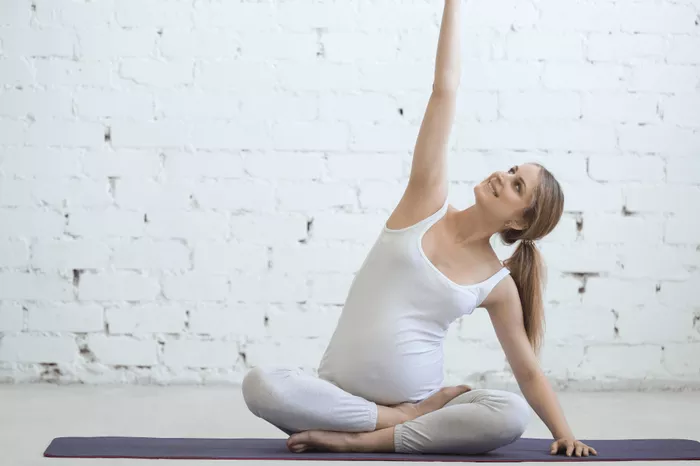Prenatal yoga is a popular choice among expectant mothers for maintaining physical fitness, reducing stress, and preparing for childbirth. However, as pregnancy progresses into the third trimester, concerns regarding safety become paramount. With the body undergoing significant changes and the fetus nearing full development, it’s crucial to evaluate whether continuing prenatal yoga is safe during this stage. In this article, we delve into the safety considerations of practicing prenatal yoga in the third trimester, providing precise answers to guide expectant mothers in making informed decisions about their exercise regimen.
1. Understanding the Physiological Changes in the Third Trimester
The third trimester marks the final stage of pregnancy, characterized by profound physiological transformations in both the mother’s body and the developing fetus. During this period, the uterus expands significantly to accommodate the growing fetus, placing increased pressure on surrounding organs and tissues. Hormonal fluctuations, ligament laxity, and changes in posture further contribute to the physical strain experienced by expectant mothers.
2. Safety Considerations for Prenatal Yoga Practice
a. Risk of Overexertion: As the pregnancy advances, the risk of overexertion during physical activity, including yoga, becomes more pronounced. Engaging in strenuous poses or holding them for prolonged periods can lead to muscle fatigue, joint strain, and potential complications.
b. Avoidance of Supine Positions: In the third trimester, lying flat on the back for extended durations can compress major blood vessels, restricting blood flow to the uterus and causing dizziness or hypotension. Therefore, pregnant women are advised to avoid supine positions in yoga practice.
c. Modification of Poses: Many traditional yoga poses may need to be modified or avoided altogether during the third trimester to accommodate the changing anatomy and reduce the risk of injury. Poses that involve deep twists, strong abdominal engagement, or intense backbends should be approached with caution or substituted with safer alternatives.
d. Emphasis on Stability and Balance: As the center of gravity shifts and ligaments become more lax, maintaining stability and balance becomes increasingly challenging for pregnant women. Prenatal yoga sessions in the third trimester should prioritize poses that enhance balance and proprioception while minimizing the risk of falls or injuries.
e. Monitoring Body Signals: Expectant mothers should pay close attention to their body’s signals during prenatal yoga practice. Discomfort, pain, or unusual sensations should not be ignored and may indicate the need to modify or cease certain poses. Hydration and adequate rest are also essential for supporting maternal and fetal well-being.
3. Consultation with Healthcare Providers
a. Individualized Assessment: Every pregnancy is unique, and the safety of prenatal yoga practice in the third trimester can vary depending on various factors such as maternal age, pre-existing medical conditions, and overall health status. Therefore, expectant mothers should undergo individualized assessments by their healthcare providers to determine the suitability of yoga practice during this stage.
b. Medical Clearance: Healthcare providers, including obstetricians or midwives, can provide valuable insights into the risks and benefits of prenatal yoga based on the mother’s specific circumstances. Obtaining medical clearance before engaging in any physical activity is crucial to ensure the well-being of both the mother and the fetus.
c. Discussion of Concerns: Expectant mothers should openly discuss any concerns or apprehensions regarding prenatal yoga practice with their healthcare providers. This facilitates informed decision-making and allows healthcare professionals to offer personalized recommendations tailored to the individual’s needs and medical history.
4. Alternatives to Traditional Prenatal Yoga
a. Water-Based Exercises: Water aerobics or aqua yoga are gentle alternatives to traditional prenatal yoga that provide buoyancy and support, reducing the risk of strain or injury while promoting cardiovascular fitness and muscle toning.
b. Prenatal Pilates: Pilates exercises specifically designed for pregnant women focus on core strengthening, flexibility, and posture alignment, offering a low-impact workout that can be safely practiced throughout the third trimester.
c. Gentle Stretching and Breathing Techniques: Incorporating gentle stretching exercises and mindfulness-based breathing techniques into daily routines can help alleviate discomfort, reduce stress, and promote relaxation without the intensity of traditional yoga poses.
Conclusion
The safety of practicing prenatal yoga in the third trimester hinges on careful consideration of individualized factors, adherence to modified poses, and close monitoring of maternal well-being. While prenatal yoga offers numerous benefits for expectant mothers, including improved flexibility, stress reduction, and preparation for childbirth, caution must be exercised to mitigate potential risks during this crucial stage of pregnancy. Consulting with healthcare providers, modifying poses as necessary, and listening to one’s body are essential practices to ensure a safe and rewarding yoga experience throughout the third trimester. By prioritizing safety and mindful practice, expectant mothers can continue to reap the benefits of prenatal yoga while safeguarding their own health and the well-being of their unborn child.



















